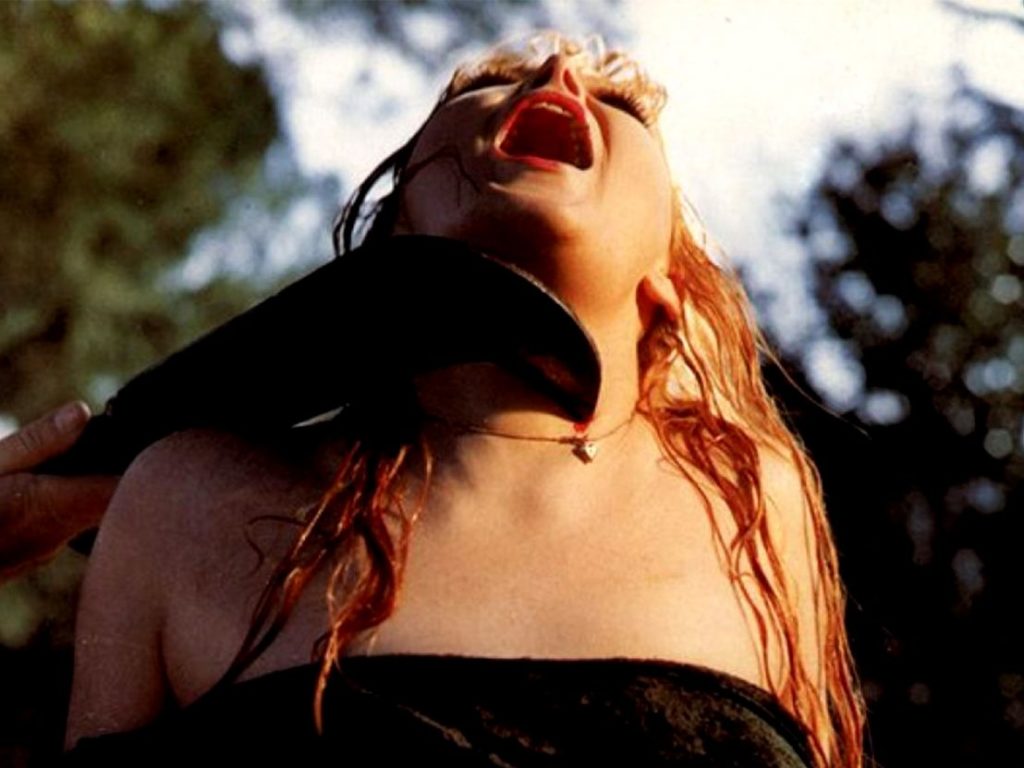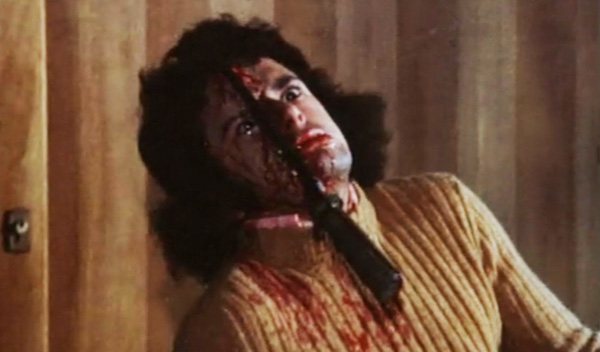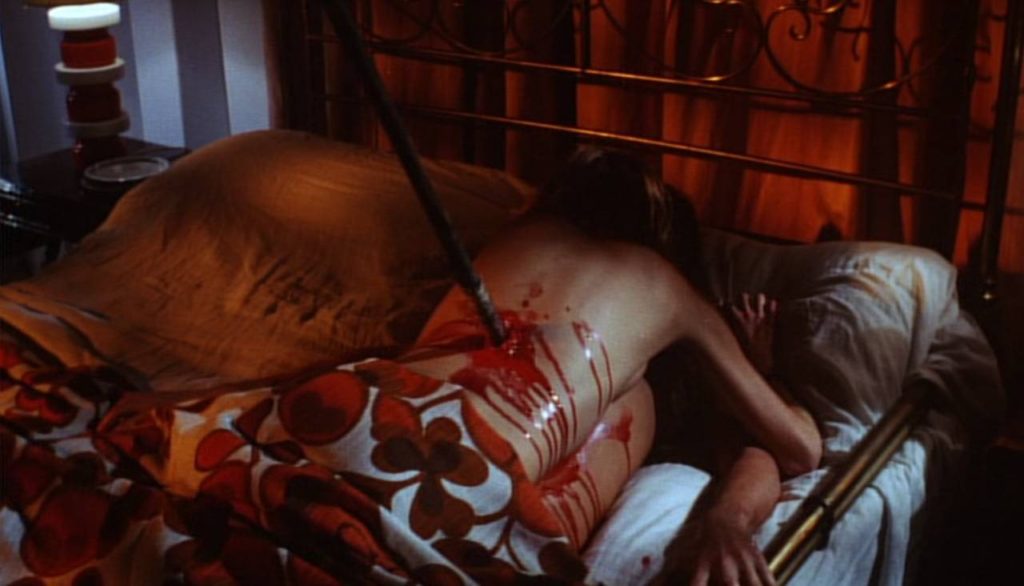If you’ve ready my previous retroview on Alfred Hitchcock’s Psycho, what I’m trying to accomplish with these aren’t necessarily to review them as much as go over in my opinion the most influential works in the horror genre. Since this month has mostly been based around the slasher subgenre, what best than to discuss a film that set the tone for decades to come.
As much as this film has inspired the slasher subgenre, A Bay of Blood is largely a giallo film. Giallo films were popularized in Italy in the mid to late 60’s and 70’s and was a combination of what we’d consider a slasher now but was steeped mostly in crime and mystery (I think the more common term is a ‘who dunnit’). Most would refer to giallo as a genre unto itself, and would lump a lot of horror films from Italy in that time period. If you have never seen this film or other giallo films (The most popular ones I’d say are probably Susperia, Zombi, Demons, and Tenebrae), I’d suggest not being an uncultured swine and giving them a go. I could rant about giallo all day long, but we’re here to discuss one single film, so let’s get to it.
A Bay of Blood has many titles, which sometimes can make talking about the film complicated because some people refer to it as one, some another. If you’ve heard of Twitch of the Death Nerve or Bahia de Sangre (the actual Italian translation), we’re referring to the same film. In my last retroview, I took a fairly deep dive into the narrative of the movie. I’m not going to go quite as deep into this one as the story isn’t nearly as important to a giallo film as the cinematography, colors, and practical effects. This particular film was made by Mario Bava, and when the Italians say they make the film, they mean it. Bava wrote the story alongside Dardano Sacchetti, he also did the cinematography and that’s really the selling point in his films. He does a lot of shots like a porn film of that time period, but he is probably one of the best of all time.
We start off with Countess Federica Donati. You see her murdered by her husband, and in quick succession her husband is killed by an unknown attacker. A police investigation turns up a suicide note making it appear to the audience that the husband had killed her for her insurance / land and we’re left with a lot of questions about the person who killed the husband. At least I was confused.
After the opening sting here, we spend the next half of the movie following 4 teenagers who break into a building on the bay to party and get killed. That’s really all we are here for. To see a chick get naked and get killed, and then to see the guy get killed, and then to see a guy and a chick get naked and get killed. When you watch this film, it’s really easy to see where a lot of the 80’s slashers get their inspiration. Just give us boobs and blood and we’re set for the entire film, and this one dumps it on us in a hurry. It’s important to mention that these kills are very close to some of the kills used in the Friday the 13th franchise.

This one is pretty typical in every slasher…however…

You can tell how prototypical this is of several kills in the early Friday movies. Marcie, the chick Kevin Bacon was sleeping with in the original, she died with an ax to the head looking fairly similar. In part 2, Mark, the guy in the wheelchair, got a machete to the face in a similar effect. Then in part 4, Crispin Glover’s character gets a cleaver to the face in again, the same shot.

Is this the scene from the 2nd Friday movie where the girl who was too young to be naked on screen bites it to a 2fer with a spear? Nope, this is how that last group of teens die in A Bay of Blood. You see now that this movie not only inspired a subgenre of American film by giving us boobs and blood, but also how the people are getting killed. The filmmakers who made the choices in the Friday films deny it, but the proof is in the pudding, Bill.
The movie continues with the other bay residences who are trying to take over the Countess’s estate, including Danati’s estranged daughter, her weakling husband and their children. These people pretty much all kill each other, and the movie even wraps up with Danati’s grandchildren shooting their parents. I’m not even bothering listing names or trying to explain the plot because it’s not important. Giallo films as a whole are notorious for having plots that go back and forth to confuse the audience. Modern films simply throw in red herrings from time to time to throw people off. These films chuck the whole damned plot at you.
To be honest, the first 2 times I watched this film, I didn’t understand what was going on. It could be that I’m intellectually stunted, sure, but I’d say the first time I was mesmerized by the stylistic choices Bava makes throughout the movie.
To conclude, you should certainly watch this movie, and any other giallo film you can get your time period. These movies were so far ahead of their time for onscreen violence and was mimicked in American cinema for decades to come.
